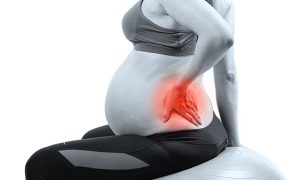
Back pain is a common complaint during pregnancy, affecting up to 70% of expectant mothers. Hormonal changes, weight gain, and shifts in posture all contribute to discomfort in the back. While back pain during pregnancy is often normal, it can interfere with daily activities and sleep. Fortunately, there are many safe and effective ways to manage and reduce back pain during this special time. This guide will help you understand why back pain occurs in pregnancy and share practical tips for relief and prevention.
During pregnancy, the body releases a hormone called relaxin, which loosens the ligaments in the pelvis and spine to prepare for childbirth. While necessary, this relaxation can reduce joint stability and cause pain.

The added weight of the baby shifts your center of gravity forward. To compensate, many pregnant women arch their lower back more than usual, increasing strain on spinal muscles and ligaments.
The growing uterus can stretch and weaken abdominal muscles, decreasing core support for the spine. This weakness can worsen back pain.
This is the most common type of pregnancy-related back pain. It typically occurs in the lumbar region and may be dull or sharp.
Pelvic girdle pain affects the joints connecting the pelvis and lower spine. It can cause discomfort while walking, standing, or changing positions.
Pressure on the sciatic nerve due to the baby’s position or spinal changes can cause shooting pain, numbness, or tingling that radiates down one leg.
Gentle exercises strengthen the muscles that support your back and improve flexibility. Consider these pregnancy-safe exercises:
Low-impact activities like swimming and prenatal yoga provide gentle stretching and muscle strengthening without adding strain.
Flat, supportive shoes help maintain balance and reduce strain. Maternity belts can provide additional abdominal and lower back support.
While back pain is common during pregnancy, consult your healthcare provider if you experience:
Your doctor may recommend physical therapy, safe medications, or other treatments tailored to pregnancy. Never take medications without consulting your healthcare provider.
Regular low-impact exercise throughout pregnancy builds strength and flexibility, reducing the risk of back pain.
Gaining weight within recommended guidelines helps reduce excessive strain on your back.
Back pain during pregnancy is common but manageable with the right strategies. Maintaining good posture, engaging in safe exercises, using supportive devices, and resting properly can significantly reduce discomfort. Always listen to your body and consult your healthcare provider if your pa